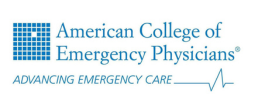SPECIAL BLOG SERIES: A “How-to” on Integrating Value-based Care Models into Existing Contracts
Welcome back to the special blog series that ACEP is doing with the Geriatric Emergency Department Collaborative (GEDC), as well as West Health and The John A Hartford Foundation! These blog posts delve into the concept of value-based care in emergency medicine.
As a reminder, the first blog post in the series, posted in May 2022, provided an overview of value-based care and highlighted some of the initial work being done within emergency medicine to improve the quality of care delivered and lower costs. We particularly focused on the advent of geriatric emergency departments (GEDs), which incorporate specially trained staff and assess older patients in a more comprehensive way. In 2018, ACEP launched the Geriatric Emergency Department Accreditation program which established criteria for three levels of GED accreditation. There are now over 371 accredited GEDs in the US, along with a growing presence internationally.
Next, in July 2022, we published a second blog post that dove deeper and discussed some of the challenges emergency medicine faces moving towards participating in value-based care payment models and what we collectively need to do to advance this movement. In the end, we made the post a call to action both for you as emergency physicians and for policymakers. It’s time to truly realize the potential of emergency physicians to influence healthcare quality and cost and engage them in value-based care initiatives and to change the perception of an emergency department (ED) visit as a failure in the system to an opportunity for changing patients’ care and cost trajectories.
We acknowledge that we have highlighted quite a few challenges that emergency medicine still needs to overcome to move to value-based payment. However, we want to let you know that it is possible to make this transition now! You can seize the moment and work with private payors to convert your fee-for-service (FFS) payment contracts into value-based contracts.
How do you do this, you may ask? How should you even approach the idea of value-based contracts with payers and then collaborate with them? Well, the folks at the GEDC and West Health have thought about this and have put together a handy three-step approach:
- Identify potential value-based care organizations (e.g., accountable care organization or ACOs, Medicare Advantage plans, Medicaid Managed Care) whose beneficiaries may be receiving care in your ED.
- Contact representatives from your hospital or health system’s population health, utilization review, executive suite, and/or contracting teams to inquire about at-risk contracts with beneficiaries receiving care in your ED.
- Research potential value-based care organizations within your community in order to locate potential collaborators (e.g., physician led accountable care organizations, Programs for All Inclusive Care of the Elderly (PACE), Primary Care First participants).
- Physician group collaborators:
- A list of the top 25 physician groups by size can be found here.In the Medicare space, given the growth in both ACOs in FFS and Medicare Advantage plans (as noted in this blog post, Medicare Advantage is reaching around 50 percent of the total Medicare population), it is important for you to particularly focus on these entities.
- ACO collaborators:
- A list of the top 25 ACOs by patient population can be found here.
- A list of Medicare Shared Savings Program ACO beneficiaries with a patient visit to a GED can be found here.
- Medicare Advantage (the private insurance option in Medicare) plan partnerships could include:
- A list of the top Medicare Advantage plans by state can be found here.

